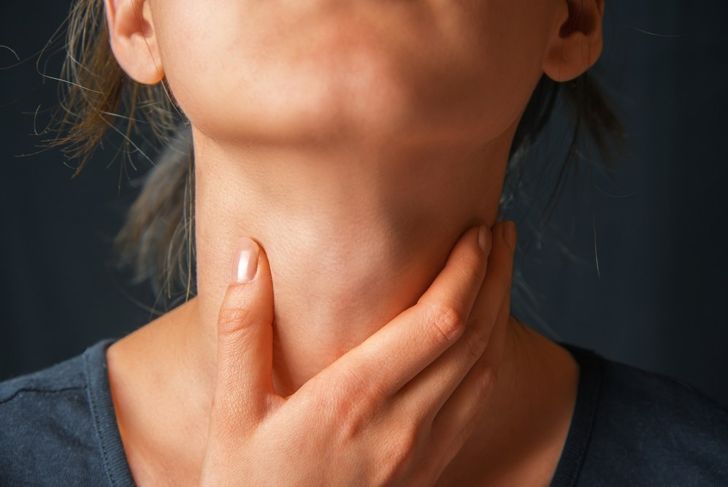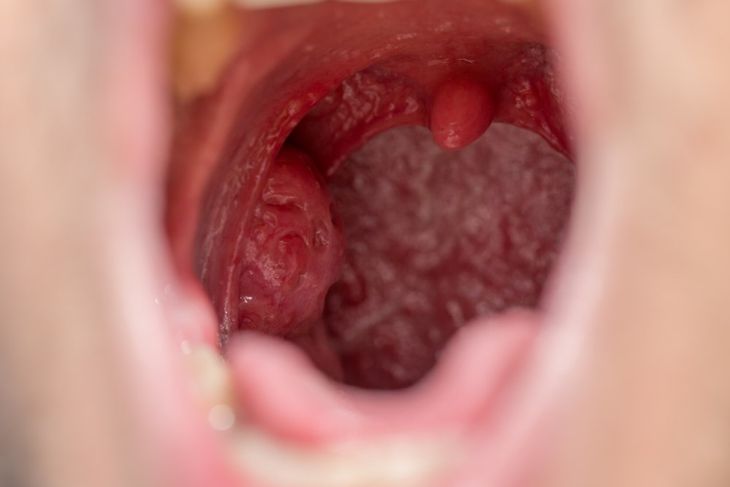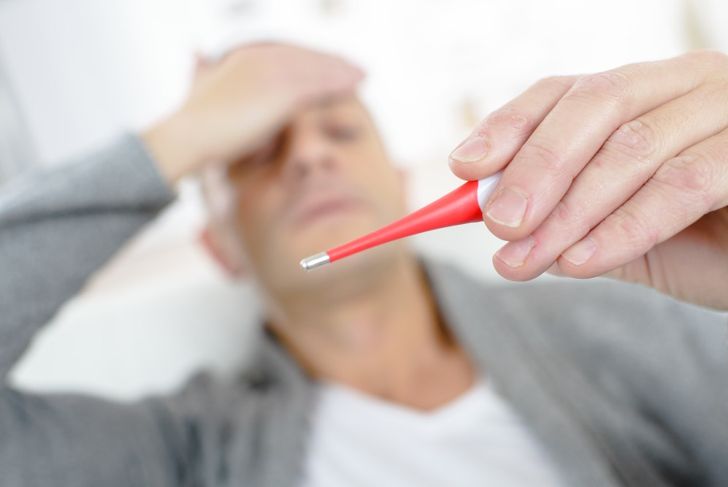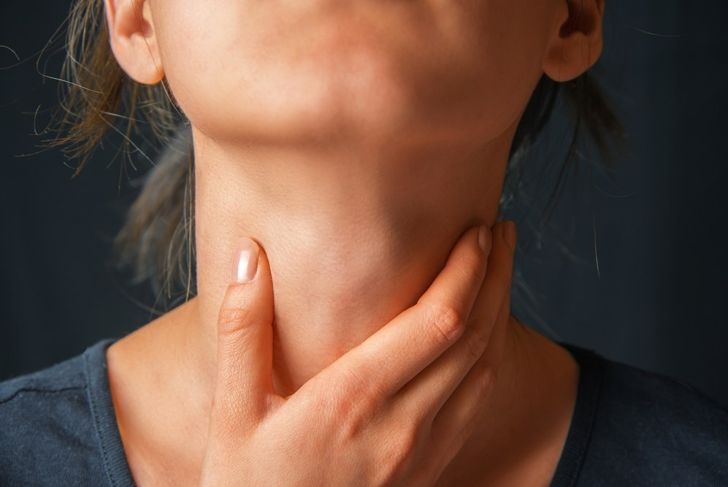A throat infection caused by the group A streptococcus bacteria, strep throat is worrisome on two counts: it is highly contagious, and it can lead to serious complications if left untreated, including rheumatic fever and kidney inflammation. Although strep throat can occur in children and adults of any age, it is most common in those aged 5 to 15 years. Usually, the incidence of streptococcal infection increases during the late fall and early spring in places where people are in close contact with each other, such as schools, daycare centers, and offices. Sharing napkins, handkerchiefs, towels, and soft toys can contribute to the spread of the infection. Strep throat can also be passed from one person to another by sharing eating utensils or drinking glasses with people who are showing symptoms of the disease, whether they have been diagnosed yet or not. Because strep throat is so contagious, early diagnosis and speedy treatment is crucial. If you are experiencing the following symptoms, you should get yourself tested for strep throat as soon as possible.
A Sore Throat
Throat ache is the most widely prevalent symptom associated with strep throat, and it is often the first symptom you’ll notice. It causes a feeling of rawness or itchiness at the back of the throat. You may find it difficult to swallow or speak loudly on account of the pain. Although this is the most distinctive symptom of strep throat, it is hardly an uncommon condition and may be caused by several other diseases. Thus, in the early stages of the infection when a sore throat is among the only symptoms you are experiencing, your doctor may not be able to provide an accurate diagnosis during your first visit. As more symptoms begin to appear, detection becomes easier and more specific, making the infection easier to diagnose successfully.
Red, Swollen Tonsils
In some cases of strep throat, the infection may spread to the tonsils, causing redness and swelling in this area. White or yellowish spots and streaks of pus may also appear on the tonsils. In rare cases, red spots may also appear on the tissue surrounding the tonsils, including the hard or soft palate. These symptoms can often lead to strep throat being confused with tonsillitis at first glance. If there are any doubts, your doctor will likely order a strep test to check for the presence of the bacteria. If the test comes back positive, your doctor will start you on antibiotics right away to eradicate the infection.
Inflamed Lymph Nodes in the Neck
Strep throat may not just cause inflammation in the lymphoid tissues of the throat, meaning the tonsils, but also those of the neck. Swollen lymph nodes of the neck suggest that the infection is severe and spreading rapidly. The neck region may be lumpy to the touch. Your doctor will be able to identify this symptom right away, as it is easily noticeable. Once treatment begins, this inflammation is likely to be one of the first symptoms to subside. If you notice swelling in the neck region alongside a sore throat or other symptoms, you should seek medical attention immediately. Don’t try to self-medicate at this stage, as swollen lymph nodes indicate that advanced symptoms have already developed.
Sudden Fever
Another common symptom witnessed in strep throat patients is the sudden onset of a high fever, usually reaching 102 degrees Fahrenheit or more. Unlike fevers caused by other infections, which are often preceded by chills or general malaise, the strep throat bacteria causes a sudden fever that may or may not be accompanied by chills. Although the high fever propels many people into self-medication, this is not the best approach in this situation. Antibiotics are required to treat strep throat, and the consumption of antiviral or other potent medication may cause unwanted side effects.
Stomach Ache or Vomiting
In some cases, particularly among young children, strep throat can produce symptoms that are seemingly unrelated to the throat condition. Stomach aches, nausea or vomiting spells may occur, though they are not very common. The biggest concern with vomiting is that it can eventually lead to dehydration. In cases where these symptoms are present, they may persist for as long as throat ache, and swollen lymph nodes remain. It is in such cases that strep throat can become excessively debilitating, impeding your routine functioning. Typically, the stomach ache and nausea appear after the throat-related symptoms have started. This reduces the chances of the condition being mistaken for a gastric problem in the early stages.
Headaches and Fatigue
Strep throat often produces mild body aches alongside the other, more specific symptoms. Most patients complain of a nagging headache throughout the infection as well as general feelings of malaise and fatigue. This fatigue is typically a consequence of your immune system being overworked. As your immune system tries to defeat the infection, it uses your body’s energy reserves, thus causing a feeling of tiredness and malaise. These symptoms may last for a couple of days after recovery as well. However, by resting, maintaining a healthy diet and drinking plenty of water, you can expect to feel healthy and energetic in less than a week.
Skin Rash
Often, strep throat is accompanied by a skin rash. This symptom is especially common in those with weak immune systems, like children and the elderly. The strep bacteria in the body causes an allergic reaction, which leads to a rash, most commonly looking like red bumps on the skin. Such a rash can develop on the neck, chest, torso or even the back. If you notice a rash on your body, get in touch with your doctor right away. Your physician can prescribe antibiotics if strep infection is detected. Prescription medication can help reduce symptoms of the infection and speed up the healing process.
Painful Swallowing
Strep throat can make it difficult to swallow your food or replenish yourself with adequate fluids to combat the infection. Drinking warm, gentle fluids, like soup or herbal teas can help soothe your throat and keep you hydrated. Although you may not have much of an appetite, in part due to the discomfort when swallowing, it is essential to keep your fluid levels up to strengthen your immune system and help your body fight off the infection.
Muscle Pain
Just like any other illness, a bacterial strep infection can cause achy muscles, along with general malaise. A lot of patients experiencing strep throat complain about stiffness in their joints, headaches, back pain and swollen lymph nodes. The area around the neck may also become hot to the touch. When your doctor prescribes you antibiotics to eradicate the infection, you should continue to take them for at least 10 days or until you have completed the prescription, even if your symptoms have subsided. As the infection wanes, you will find relief from muscle aches and pains, but it is essential to complete the course of the antibiotics to ensure the infection doesn’t come back.
White Patchy Throat
Winter allergies or dry ambient air can often mimic strep infection by making the back of the throat raw, inflamed and scratchy. In extreme cases of strep throat, the back of the throat can look red with patchy white skin. Although other conditions can cause this symptom, more often than not, it is a strep infection that is the culprit. Your doctor will be able to confirm the presence of a strep infection with a simple strep test.

 Home
Home Health
Health Diet & Nutrition
Diet & Nutrition Living Well
Living Well More
More




















